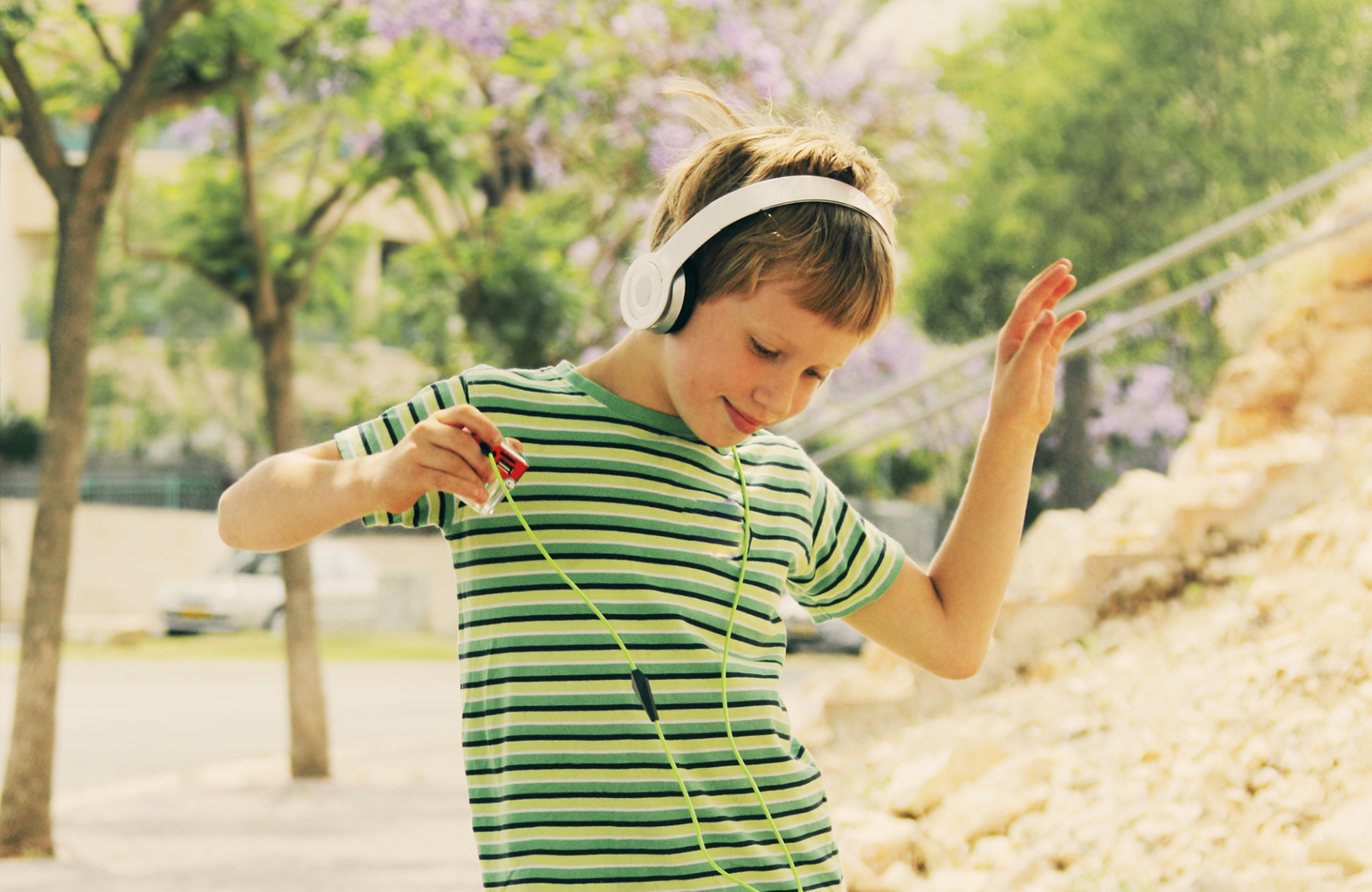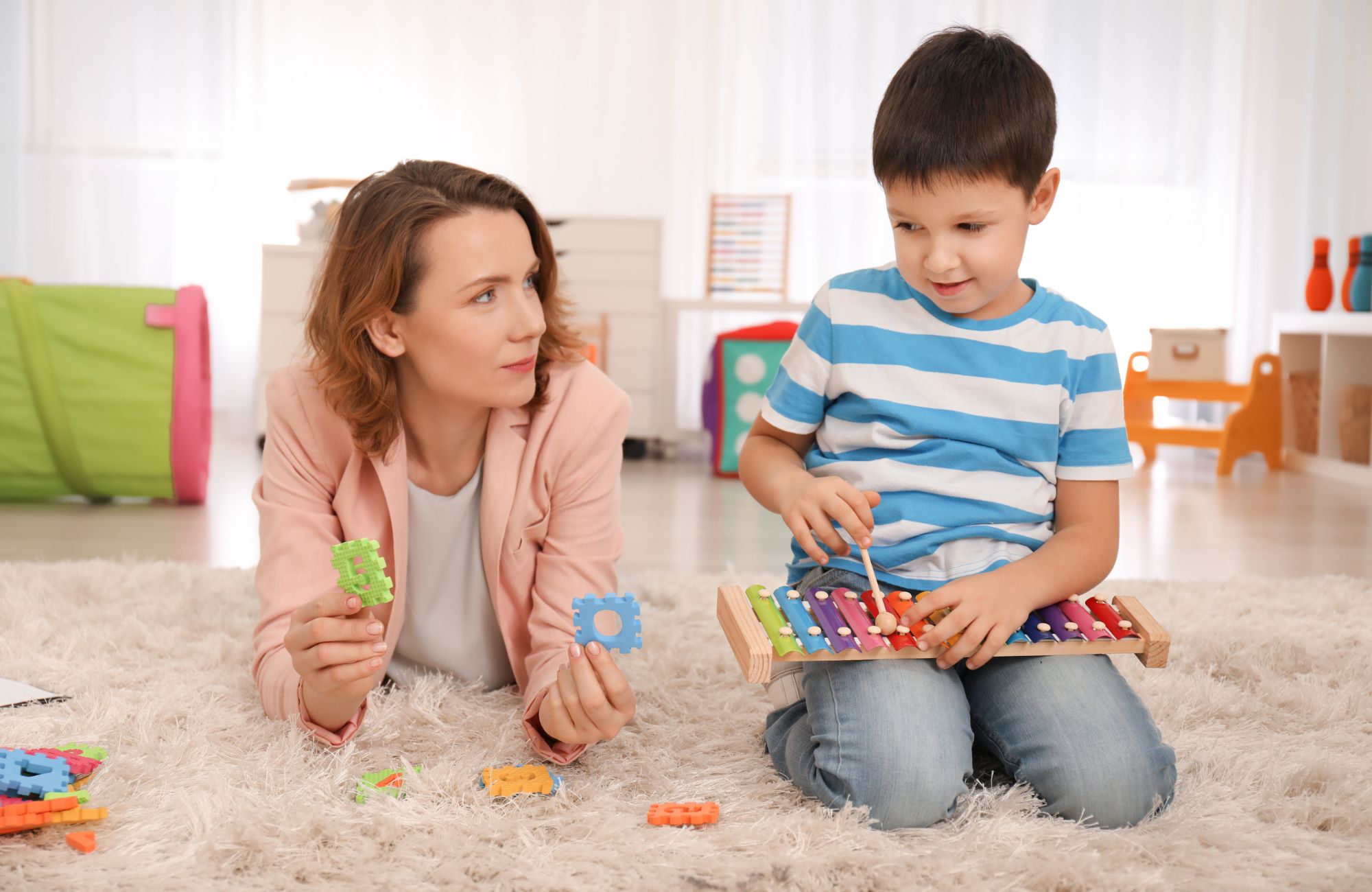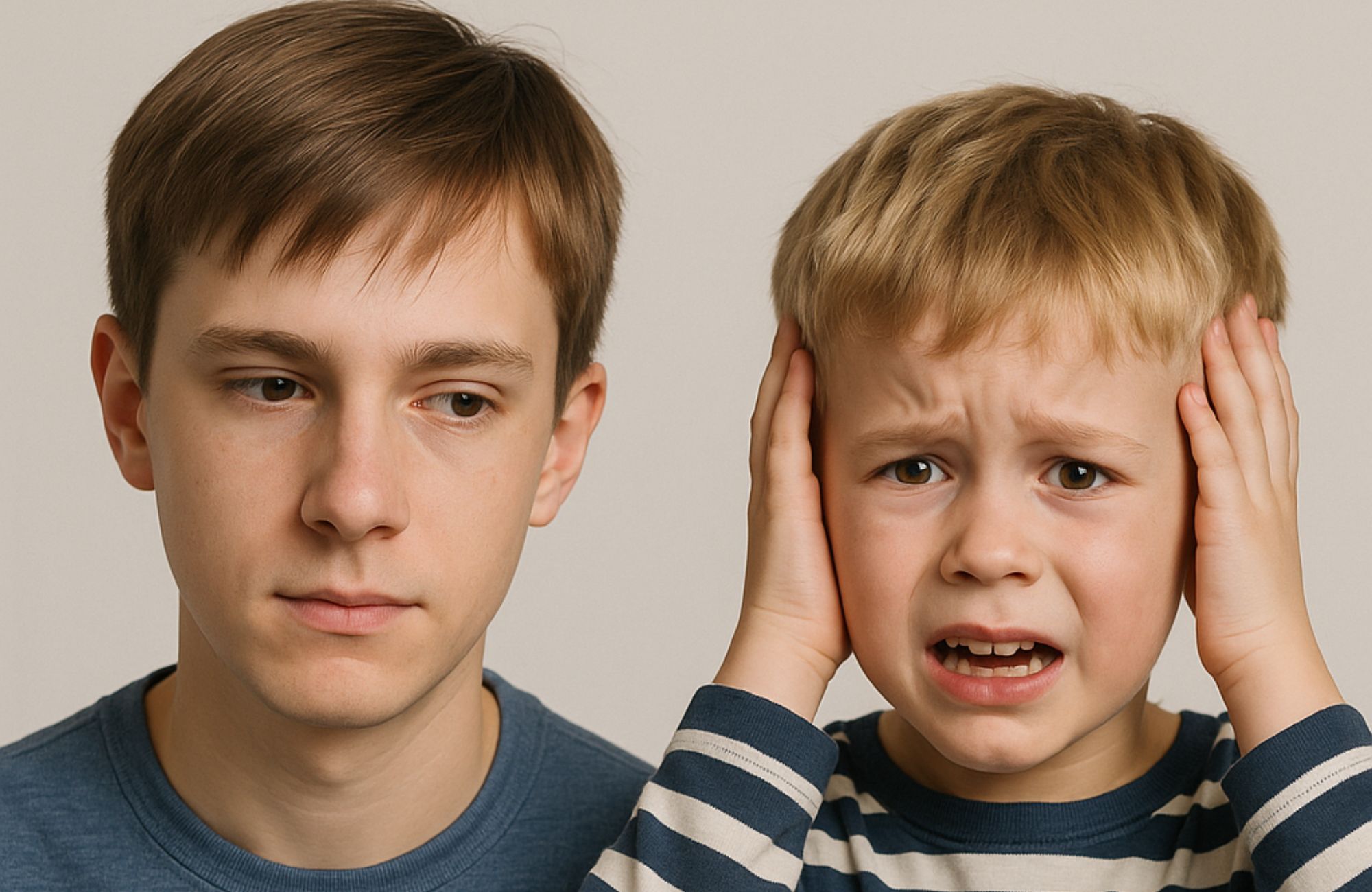Understanding Autism and Headphones for Sensory Support
Have you ever seen someone wearing headphones in a place that seemed unusual, like a grocery store, during a meeting, or at a family gathering, and wondered why? For many individuals with autism, headphones are not just for music or entertainment. They are a powerful tool for navigating a world filled with overwhelming sounds, unexpected noise, and constant sensory stimuli. In fact, up to 90 percent of autistic people experience sensory processing differences, making everyday environments feel chaotic or even painful. The connection between autism and headphones goes far beyond convenience. It represents comfort, control, and the ability to participate more fully in daily life.
Understanding Autism and Sensory Sensitivities
Autism Spectrum Disorder (ASD) is a common neurodevelopmental condition that affects how a person interacts socially, communicates, and processes sensory information. In the United States, about 1 in 36 children is diagnosed with autism, highlighting just how widespread it is.
A key aspect of autism that is often overlooked is the way sensory input is experienced. For many people with autism, the brain processes sights, sounds, textures, and other sensations differently. This can show up as hypersensitivity, where loud noises or bright lights feel overwhelming, or hyposensitivity, where more intense input is needed to notice a sensation. These responses can vary across different senses and may change depending on stress levels, fatigue, or the environment.
Auditory Sensitivities
Sound sensitivity (sometimes called auditory defensiveness) is among the most common sensory challenges for individuals with autism. Sounds or auditory stimuli that seem ordinary to neurotypical people can be painfully loud, distracting, or overwhelming for someone with autism. Common sound triggers include:
| Sound Type |
Examples |
Impact |
| Sudden sounds |
Alarms, doors slamming, dropping objects |
Can trigger startle responses or pain |
| High-pitched sounds |
Whistles, some electronic devices, certain voices |
Often experienced as physically painful |
| Multiple overlapping sounds |
Crowded venues, background conversations |
Creates “auditory clutter” that’s difficult to filter |
| Repetitive sounds |
Ticking clocks, dripping faucets |
Can become a focus of attention that can’t be ignored |
| Loud appliances |
Vacuum cleaners, blenders, hand dryers |
Often experienced as physically painful |
It’s important to understand that this sensitivity isn’t about having more sensitive ears in the traditional sense. Rather, it’s about how the brain processes auditory information. For many autistic people, the brain’s filtering mechanisms don’t effectively screen out unimportant background noise, causing all sounds to compete equally for attention.
Sensory Overload in Autism
Sensory overload occurs when the brain receives more sensory input than it can effectively process. For autistic individuals, this threshold is often lower due to differences in neurological filtering systems.
Imagine trying to have a conversation while ten televisions are playing different channels at high volume, bright flashing lights surround you, and someone is spraying strong perfume nearby. The overwhelming sensory input would make it nearly impossible to focus. This is similar to what many autistic people experience in environments that might seem perfectly comfortable to others.
Signs of Sensory Overload
Sensory overload can manifest in various ways:
- Covering ears or eyes
- Becoming extremely anxious or agitated
- Attempting to leave the environment
- Rocking, flapping hands, or other repetitive movements
- Shutting down (becoming very quiet or unresponsive)
- Melting down (explosive emotional response)
- Increased stimming behaviors
- Difficulty speaking or processing language
- Physical symptoms like headaches or nausea
The impact of sensory overload extends far beyond momentary discomfort. It can significantly affect an autistic person’s ability to communicate, learn, socialize, and perform daily activities. Chronic sensory overload can lead to increased anxiety, avoidance behaviors, and reduced quality of life.
Why Autistic People Wear Headphones
For many autistic individuals, headphones serve as an essential tool for navigating a world that can be sensory overwhelming. Here’s why:
Managing Noise Sensitivity
Noise reduction headphones help reduce overwhelming environmental sounds, making noisy spaces like classrooms, malls, or gatherings more manageable. For autistic individuals with sound sensitivity, these provide a buffer that can mean the difference between participating in an activity or needing to avoid it altogether.
Preventing Sensory Overload
Many autistic individuals use headphones proactively as a strategy for reducing sensory overload before it starts. By creating a more predictable auditory environment, headphones help maintain sensory balance, making it easier to process other inputs and stay engaged without reaching a point of distress.
Self-Regulation and Comfort
Headphones play a vital role in managing sensory sensitivities by giving autistic individuals control over their sensory environment. Being able to adjust the volume, choose calming sounds, or block out overwhelming noise helps maintain a sense of calm and focus. This control supports learning, working, socializing, and participating in everyday life.
Creating a Personal Sensory Sanctuary
The idea of a personal sensory sanctuary is especially meaningful for autistic individuals. Headphones create a portable safe space that offers a consistent auditory environment, a retreat during overwhelming moments, and a tool for focus in distracting settings. For many, this is not a luxury but a necessary support for navigating a world that often does not consider their sensory needs.
Signaling the Need for Reduced Social Interaction
Headphones can also act as a visual signal that an individual may need space or reduced social interaction. This non-verbal cue helps autistic people manage their social energy and set boundaries without having to constantly explain themselves, especially in environments with high social expectations or when verbal communication is difficult.
Types of Headphones for Autistic Individuals
Not all headphones are created equal when it comes to addressing the sensory needs of autistic individuals. Different types offer varying benefits:
Noise-Canceling Headphones
Noise-canceling headphones use built-in microphones and advanced technology to reduce background noise by producing opposite sound waves, making them especially effective for low, consistent sounds like engines or air conditioning. For autistic individuals, these can ease sensory overload by lowering background noise, allowing for calmer listening at lower volumes. However, they may feel uncomfortable for some and can be costly or require frequent charging.
Over-Ear Headphones
Over-ear headphones fully cover the ears with cushioned cups, naturally blocking out external noise through passive noise isolation without needing batteries or active technology. They are often more comfortable for long use, do not cause pressure sensations, and avoid insertion into the ear canal, which makes them ideal for individuals with tactile sensitivities. While their larger size can offer a helpful visual cue that someone needs quiet, it may be less discreet for those who prefer a more subtle option.
In-Ear Headphones/Earbuds
In-ear headphones fit directly into the ear canal, creating a seal that helps block external sound. They are compact, lightweight, discreet, and often more affordable than over-ear or noise-canceling options. However, they may not be suitable for autistic individuals who have tactile sensitivities or find the in-ear pressure uncomfortable.
Bone Conduction Headphones
Bone conduction headphones are a lesser-known but valuable option that transmits sound through vibrations against the cheekbones, bypassing the ear canal entirely. They leave the ears open to hear important environmental sounds, cause no pressure on or in the ears, and can be worn with earplugs for customized noise reduction. This makes them especially helpful for individuals with ear sensitivities or in situations where some environmental awareness is needed for safety or participation.
Factors to Consider When Choosing Headphones
Selecting the right headphones involves considering multiple factors beyond just noise reduction:
- Noise Reduction Ratings and Effectiveness: Higher ratings indicate better noise blocking. Active noise cancellation works best for consistent low-frequency sounds, while passive isolation is more effective for higher-pitched noise. Some environments may require a mix of both.
- Comfort and Adjustability: Key for long-term use, especially for autistic individuals. Consider headband pressure, ear cup texture, overall weight, adjustability for fit, and potential heat buildup from over-ear styles.
- Sensory Considerations Beyond Sound: Headphones also affect tactile comfort, proprioceptive awareness, visual preferences, and thermal sensitivity. All of these can impact whether a headset is soothing or overwhelming.
- Durability and Maintenance: Daily use calls for sturdy construction. Look for reinforced headbands, replaceable ear cushions, detachable cables, foldable designs, and materials that are easy to clean.
Benefits of Headphone Use for Autistic Individuals
The benefits of headphone use for autistic individuals extend far beyond simple noise reduction. They can significantly improve quality of life in multiple domains:
Creating Independence and Control
For autistic individuals, headphones offer a simple yet powerful way to manage sensory input and navigate the world more comfortably. They provide control over overwhelming environments, reduce the need for outside help, and support independence by allowing individuals to adapt their sensory experience on their own terms.
Enhancing Focus and Attention
Headphones can significantly improve focus for autistic individuals by filtering out background noise, conserving mental energy, and creating a more predictable environment. Many report that using headphones makes it much easier to stay productive and attentive in distracting settings.
Reducing Anxiety and Stress
The link between sensory overload and anxiety is well-established, and headphones can play a key role in reducing both. By lowering stress responses, preventing anxiety triggers, and offering a sense of control in unpredictable environments, headphones help create a calming buffer. This can lead to better sleep, improved social interactions, and overall well-being for autistic individuals.
Supporting Communication and Social Engagement
While it may seem counterintuitive, headphones can actually enhance social engagement for many autistic individuals. By reducing sensory overwhelm and anxiety, they free up mental energy for communication and make it easier to process language. This often leads to more comfortable, authentic, and sustained social interactions.
Practical Applications of Headphones in Different Settings
Headphones serve different purposes across various environments. Understanding these applications can help create more inclusive spaces:
Educational Environments
Schools can be overwhelming for autistic students due to constant noise and unpredictable sounds. Headphones help by reducing distractions, easing transitions, and creating a more manageable environment during loud or busy times like lunch or assemblies. For many, they are a vital accommodation that supports focus and emotional regulation and can be formally included in IEPs or 504 plans as assistive technology.
Workplace Settings
In work environments, headphones can serve as a reasonable accommodation that enables autistic employees to perform at their best:
- Creating focus in open office floor plans
- Reducing stress in customer-facing positions during breaks
- Managing sensory challenges in manufacturing or industrial settings
- Facilitating recovery after meetings or social interactions
- Improving executive functioning and task completion
Under the Americans with Disabilities Act (ADA), employers are often required to consider headphones as a reasonable accommodation, though safety considerations must be balanced in certain environments.
Public Spaces and Community Settings
Community spaces often involve overwhelming sensory input, but headphones can make these environments more accessible for autistic individuals. Whether it’s grocery stores, public transportation, medical appointments, or events, headphones offer a way to manage noise and reduce stress. For many, this ability to regulate sensory input is key to participating in everyday life rather than feeling isolated.
Supporting Autistic Individuals
Supporting autistic individuals who use headphones starts with understanding and respect. Headphones are not a sign of disinterest or rudeness; they are an important tool that helps manage sensory input and support participation. It is important not to make assumptions, take offense, or expect someone to remove their headphones during interactions. Usage varies based on individual needs and environments, and for many, headphones are essential rather than optional for engaging in daily life and community settings.
Creating inclusive spaces goes beyond individual support. Reducing background noise, offering quiet zones or sensory breaks, and giving advance notice of loud events can make a big difference. These simple changes not only help autistic individuals but also benefit anyone sensitive to noise, including those with hearing aids, migraines, or focus challenges.
Conclusion
For many autistic individuals, headphones are more than just a listening device—they’re a vital tool for navigating a world full of sensory challenges. Whether used to reduce noise, prevent overload, or support focus and social engagement, headphones offer comfort, control, and independence. By understanding their value and supporting their use in various environments, we can help create a more inclusive and accessible world for all.
At Affinity ABC, we recognize the unique sensory needs of every individual. Our team offers personalized support strategies, including sensory accommodations like headphone use, to help autistic children thrive at home, in school, and in the community. We are proud to support families across New Mexico with compassionate, evidence-based services designed to empower your child and guide your family’s journey. Contact us today to learn more.
FAQs
Should an autistic child wear headphones?
Headphones can help autistic children who experience sound sensitivity by filtering out ambient noise in challenging environments. The decision should be based on the individual child’s sensory needs and preferences, ideally with guidance from an occupational therapist.
Why do autistic people need noise-cancelling headphones?
Autistic people often benefit from headphones with active noise cancellation technology because they can reduce overwhelming background noise that may cause sensory overload. These specialized headphones create a more controlled auditory environment by actively canceling out ambient sounds, helping to prevent distress and allowing better focus and participation in daily activities.
Is listening to music good for autism?
Many autistic individuals find that listening to music through headphones can be calming, provide emotional regulation, and serve as a positive form of stimming. Music can create predictable, enjoyable auditory input that helps filter out overwhelming environmental sounds while providing sensory engagement that matches the individual’s preferences.
What headphones are good for autism?
The best headphones for autism depend on individual sensory preferences, but quality noise-canceling headphones with comfortable ear cups and adjustable fit are often recommended. Models that create equal but opposite noise waves are particularly effective for reducing environmental sounds without causing additional sensory discomfort.









